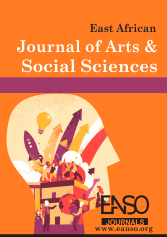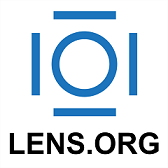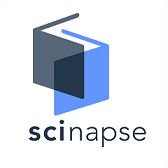Teaching Change: TESCEA’s Journey Toward Gender-Equitable Higher Education – A Case Study of Gulu University, Uganda
Abstract
This study critically examined the effectiveness of TESCEA’s gender mainstreaming initiatives at Gulu University, focusing on gender training workshops, policy advocacy, and the establishment of a dedicated Gender Mainstreaming Unit. Employing qualitative methods, data were collected from academic staff and university leadership to explore how these interventions embedded gender-responsive pedagogy within the institution’s teaching and policy frameworks. Findings revealed that participatory gender training significantly enhanced staff awareness and fostered transformative teaching practices, while policy reforms contributed to institutionalising gender equity mandates. The Gender Mainstreaming Unit emerged as a key actor in sustaining momentum and ensuring accountability. However, challenges such as limited resource allocation and entrenched cultural norms continued to hinder comprehensive progress. The study highlights the critical importance of context-sensitive, multi-level strategies that address both institutional structures and socio-cultural realities to effectively advance gender equity in higher education. These insights contribute to the growing body of research on gender mainstreaming in African universities and offer practical implications for policy and practice
Downloads
References
Acker, J. (2006). Inequality regimes: Gender, class, and race in organizations. Gender & Society, 20(4), 441–464. https://doi.org/10.1177/0891243206289499
Akinsola, T., & Atikpo, K. (2022). Faculty attitudes and unconscious bias in gender-responsive pedagogy: A case of Nigerian universities. International Journal of Gender Studies in Education, 21(3), 255–279.
Bajaj, M. (2020). Gender responsive pedagogy: A transformative model for teacher training in the Global South. Routledge.
Boateng, R., & Asante, A. (2021). Applying Acker’s inequality regimes in African universities: Insights from Ghana. Journal of African Higher Education Studies, 5(2), 89–107.
Braun, V., & Clarke, V. (2006). Using thematic analysis in psychology. Qualitative Research in Psychology, 3(2), 77– 101. https://doi.org/10.1191/1478088706qp063oa
Collins, P. H., & Bilge, S. (2020). Intersectionality (2nd ed.). Polity Press.
Creswell, J. W., & Poth, C. N. (2018). Qualitative inquiry and research design: Choosing among five approaches (4th ed.). Sage.
hooks, b. (2014). Teaching to transgress: Education as the practice of freedom (2nd ed.). Routledge. (Original work published 1994)
Kabonesa, C., & Mugisha, F. (2019). Intersectionality and access to higher education: Evidence from Uganda. African Journal of Gender & Education, 4(1), 45–62.
Kabeer, N. (2018). Gender mainstreaming in higher education: Theoretical critiques and practical challenges. Journal of Gender Policy Studies, 12(3), 129–145.
Kamau, N., & Wambua, P. (2021). Challenges of implementing gender responsive pedagogy in higher education: A case study of Kenyan universities. African Educational Research Journal, 9(1), 25–34. https://doi.org/10.30918/AERJ.91.21.012
Kaleidoscope Trust. (2021). Evaluating gender policy localization in African universities. Kaleidoscope Trust.
Knowles, M. S. (1980). The modern practice of adult education: From pedagogy to andragogy (2nd ed.). Cambridge Adult Education.
Kvale, S., & Brinkmann, S. (2015). InterViews: Learning the craft of qualitative research interviewing (3rd ed.). Sage.
Leathwood, C., & Read, B. (2020a). Changing policy analysis in gender mainstreamed curricula in UK higher education. Gender and Education, 32(1), 25–41.
Leathwood, C., & Read, B. (2020b). Holistic institutional approaches to gender equity in higher education: Integrating policy, pedagogy, and leadership. Higher Education Policy Institute.
Lincoln, Y. S., & Guba, E. G. (1985). Naturalistic inquiry. Sage.
Merriam, S. B., & Tisdell, E. J. (2016). Qualitative research: A guide to design and implementation (4th ed.). Jossey-Bass.
Ministry of Gender, Labour and Social Development (MGLSD). (2023). Uganda gender policy implementation framework. Government of Uganda.
Morley, L. (2020). Gender, equity and transnational networks in higher education. Emerald Publishing.
Mukasa, S., & Ajwang, W. (2020). Donor dependency and sustainability of gender mainstreaming initiatives in East African universities. East African Review of Gender Studies, 2(1), 17–34.
Mukhtar, M., & Akhtar, S. (2021). Institutional incentives and challenges in implementing feminist pedagogy: A study from Pakistani universities. International Feminist Journal of Education, 29(4), 400–417.
Mungai, P. (2020). Policy vs practice: Gender equity mandates in Kenyan universities. African Higher Education Review, 8(2), 66–84.
Munu, E., & Ncube, L. (2022). Intersectionality in gender policy: How African universities
Nyoni, L. (2021). The effectiveness of Gender Mainstreaming Units in Sub-Saharan African universities. Journal of Gender Organizational Studies, 37(2), 112–130.
O’Connor, P., Goode, J., Gilmartin, M., & Corrigan, E. (2019). Gendered experiences of academic careers: Harassment and inequality at work. Studies in Higher Education, 44(4), 785–795.
O’Sullivan, M., Robertson, K., & Jackson, L. (2022). Evaluating participatory gender trainings in higher education. International Journal of Educational Development, 86, Article 102542.
Olafsson, M., Mbati, I., & Ejechi, E. (2021). Embedding gender perspectives in STEM curricula across Africa. Journal of STEM Education and Equality, 10(2), 95–110.
Okello, M. C., & Nebongo, P. (2021). Gender inequalities in post-conflict educational systems: The case of Northern Uganda. Journal of African Studies and Development, 13(2), 17–28. https://doi.org/10.5897/JASD2021.0612
Oketch, M., Mugo, J., & Njuki, J. (2019). Patriarchal cultural norms and women’s leadership in African universities. Gender, Culture & Education, 3(1), 13–29.
Patton, M. Q. (2015). Qualitative research & evaluation methods (4th ed.). Sage.
Read, B., & Leathwood, C. (2020). Institutional resilience: Sustaining gender equity initiatives. Journal of Higher Education Resilience, 4(2), 77–92.
Schwandt, T. A. (2014). The SAGE dictionary of qualitative inquiry (4th ed.). Sage.
Ssekandi, R., & Naluwairo, R. (2024). Institutionalizing gender mainstreaming in Uganda’s higher education: Opportunities and constraints. Uganda Journal of Higher Education Studies, 10(1), 55–72.
True, J. (2003). Mainstreaming gender in global public policy. International Feminist Journal of Politics, 5(3), 368–396. https://doi.org/10.1080/1461674032000140374
UN Economic and Social Council. (1997). Report of the Economic and Social Council for 1997: Agreed conclusions on mainstreaming a gender perspective into all policies and programmes. United Nations.
UN Women. (2021). Beyond numbers: Evaluating qualitative outcomes in gender mainstreaming efforts. UN Women.
UNESCO. (2022). Gender equality in education: Progress and challenges. UNESCO Publishing.
UNESCO. (2022). Global education monitoring report 2022: Gender equality in education – Looking beyond parity. UNESCO Publishing. https://unesdoc.unesco.org/ark:/48223/pf0000381181
United Nations. (2015). Transforming our world: The 2030 Agenda for Sustainable Development. United Nations.
Walby, S. (2005). Gender mainstreaming: Productive tensions in theory and practice. Social Politics, 12(3), 321–343. https://doi.org/10.1093/sp/jxi023
Yin, R. K. (2018). Case study research and applications: Design and methods (6th ed.). Sage.
Copyright (c) 2025 Gloria Lamaro, Beatrice Abonga Ajok, Ricky Richard Ojara, Elly Kurobuza Ndyomugyenyi, George Ladaah Openjuru

This work is licensed under a Creative Commons Attribution 4.0 International License.




























